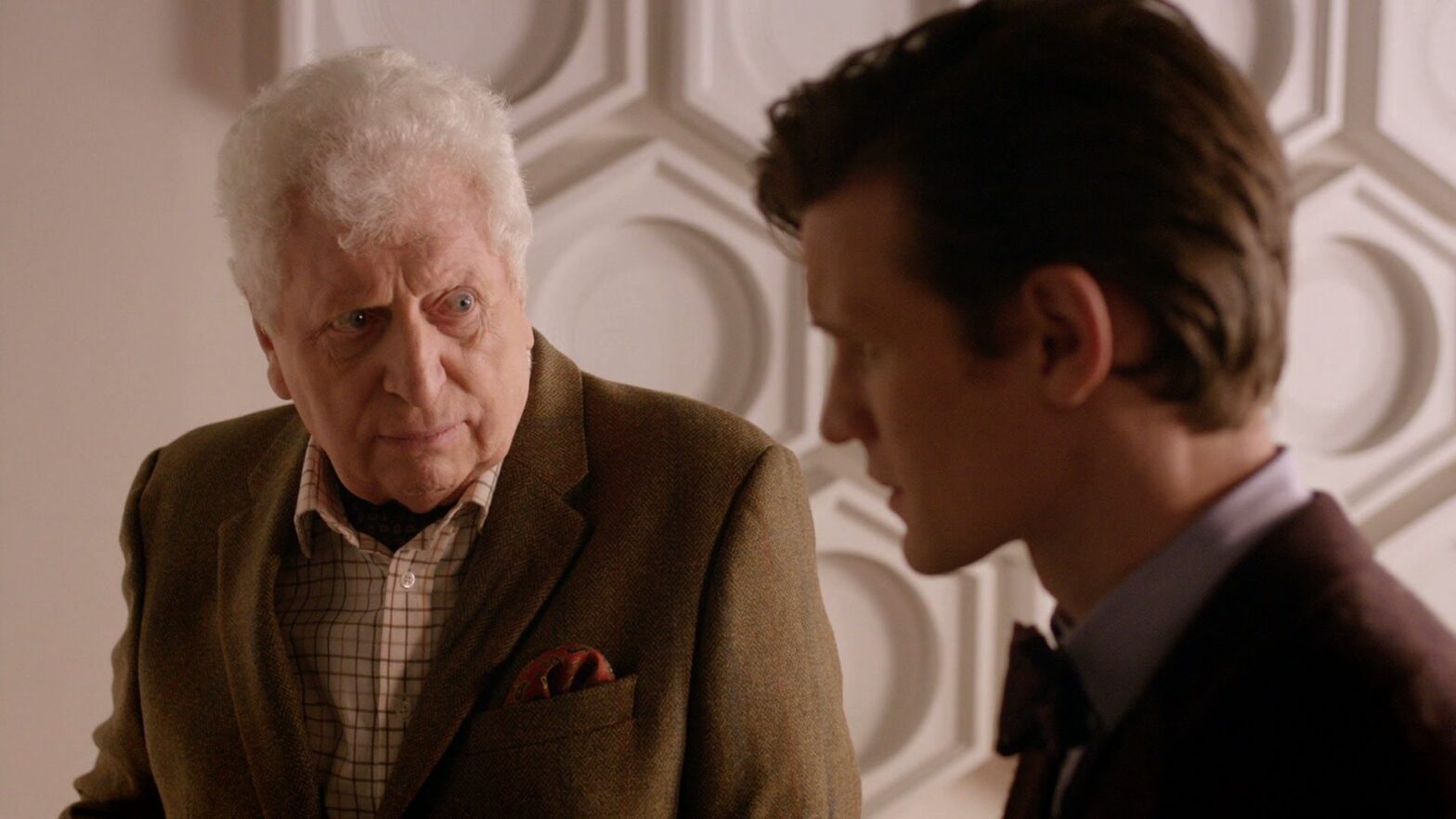Earlier this week, Lance Parkin and Lars Pearson’s Unhistory, a chronology of the apocryphal (and sometimes impossible) Doctor Who stories, was released as an ebook. Like the previous Ahistory (a chronology of the “real” Doctor Who), Unhistory has essays on various topics that deserve greater exploration and insight. Notably, Unhistory has an essay titled “Old Tom,” an exploration of the white-haired Doctor portrayed by Tom Baker in the video release of “Shada,” a series of New Zealand television commercials, and “The Day of the Doctor.”
Unhistory explores three possibilities — this Doctor is a future Doctor (a possibility that Unhistory dismisses for a variety of reasons), this Doctor is a ghost of the fourth Doctor created as a byproduct of the Watcher’s influence in “Logopolis,” or this Doctor was resurrected by the Time Lords during the Time War (much as they did with the Master) when the eighth Doctor wanted nothing to do with the conflict.
I was musing on these possibilities this morning while I was drinking my coffee, when my brain wasn’t quite in gear. And I had an insight. “Old Tom” may explain how the Doctor both has and doesn’t have pre-Hartnell incarnations.
“The Brain of Morbius” shows that the Doctor’s life didn’t begin with William Hartnell’s Doctor. We see that the Doctor had eight lives before Hartnell, and Hartnell was the ninth Doctor, making Tom Baker the twelfth incarnation. This then became a data point that Doctor Who then dismissed; Peter Davison is clearly several times the Doctor’s fifth incarnation. At one point in time, William Hartnell, though he was the first actor we saw as the Doctor in Doctor Who, Hartnell wasn’t the first Doctor. But, then Hartnell was both the first actor to play the Doctor and the first Doctor. How did this happen? How can both be true?
Here’s my hypothesis.
During the Time War, the Time Lords didn’t so much resurrect the fourth Doctor to act as their agent as they pulled him out of time and duplicated him.
Perhaps the Time Lords couldn’t resurrect the fourth Doctor because the Doctor was still alive, so they had to do something else, something desperate — they found a point in the Doctor’s life (perhaps when he was timescooped and trapped in time during “Shada”/”The Five Doctors” — a result not of a faulty Time Scoop but the War-era Time Lords intercepting the Time Scoop) and, to duplicate him, they took his biodata and overwrote it onto another Time Lord’s life, transforming this sacrificial Time Lord into the fourth Doctor and, as far as he’s aware from this point forward, mentally and biologically he always was and is the Doctor.
But, this process also truncated the duplicate Doctor’s life; perhaps it used a regeneration cycle (or three) of the sacrificial Time Lord in their efforts to transform him into the Doctor. As a result, the Doctor, who had been in his twelfth incarnation when he was taken out of time and duplicated, is duplicated into a Time Lord who was only in his fourth. And so, the duplicated Doctor only remembers his preceeding three lives with any certainty and things before that uncertainly or not at all.
Now, this is where it gets tricky or strange.
The “real” fourth Doctor would be the one who fights the Time War, introduces “Shada,” and eventually retires to become the Curator of the Undergallery. If the Time Lords went to this end to pull the Doctor into the Time War, they would want to make sure they had the “real” deal. This Doctor would remember his pre-Hartnell lives with great detail.
The “duplicated” Doctor, then, is the one who was freed from the Time Scoop, continued to travel with Romana, regenerated into Peter Davison, and so on. When he meets his wife, Patience, after his regeneration, it’s no puzzle why he can’t entirely remember her; his memories of his pre-Hartnell lives don’t really exist for him anymore. He may suspect at times that part of his life is gone, but eventually his mind forges false memories to cover over the gaps, and as far as he’s concerned his life always and ever only began with William Hartnell’s Doctor, and when Matt Smith rolls around he is legitimately the thirteenth and final incarnation of this Doctor’s cycle of regenerations.
None of this means that the Doctor we’ve followed on Doctor Who since “Shada” is a different Doctor than we saw before. A difference that makes no difference is no difference, and as far as the Doctor is concerned, as far as biology is concerned, as far as the universe and history is concerned, there’s no difference to who he is, even though he’s been duplicated by desperate Time Lords far in his future.
As strange, weird, and downright niche this is, this hypothesis feels intuitively right to me. Of course, there’s no way to test this hypothesis, but now I can imagine a multi-Doctor story set during the Time War with an older, white-haired fourth Doctor and the War Doctor, perhaps still in his relative youth after his regeneration.
